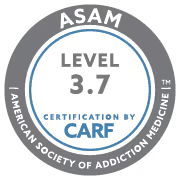Table of Contents
Some of the common side effects of withdrawal include pain, panic attacks, and anxiety. They form the most difficult parts of dealing with withdrawal, and most substance abusers start abusing alcohol and drugs to get rid of them. This shows a close connection between pain, panic, anxiety, and addiction.
Panic Disorder and Addictions
Panic disorder is a type of anxiety characterized by a sudden feeling of panic. According to the National Institute of Mental Health, it is one of the most common types of mental illness. The common symptoms of panic attacks may include:
• Chest pain
• Irregular heartbeat
• Difficulty breathing
• Nervousness
• Sweating
• Shaking
• Paranoia
• Dizziness
A panic attack triggers a fight or flight response where the body releases the hormone adrenaline and gives you more energy. It is usually caused by certain situations people are afraid of, such as public speaking, driving, or attending social events. People suffering from panic attacks and anxiety are at an increased risk for addiction. It is also challenging to treat due to the coexisting problems of mental illness and addiction.
Self-medication for Anxiety
Some people result in self-medication to calm the distressing symptoms of anxiety. Doctors use medication such as benzodiazepines to help control intense panic attacks. However, these medications have severe side effects such as addiction and accidental overdose. The medical community reviewed the risks and determined that benzodiazepines are not effective in treating anxiety.
Self-medication can intensify the effects of anxiety by worsening the physical and psychological symptoms. People suffering from anxiety attacks may turn to alcohol and drugs abuse to deal with the effects. This can lead to a dependence on substances when people use them as a means to escape. Self-medicating with drugs and substances can worsen anxiety symptoms by triggering panic attacks.
Effects of Alcohol
Alcohol affects various parts of the brain, and it can temporarily reduce the effects symptoms of anxiety and panic attacks. A person can feel short-term relief from anxiety while they are under the influence. However, this is not a treatment, and it can lead to brain damage which can intensify panic attacks and anxiety symptoms. Trying to control anxiety with alcohol only postpones the brain’s stressors later, making anxiety and panic attacks more frequent and intense.
Withdrawal Side Effects
The brain experiences panic and anxiety as side effects of alcohol and drugs withdrawal. These effects can be dangerous since they appear as symptoms of natural diseases. The body tries to regain balance during withdrawal which can cause an individual to experience real symptoms such as heart failure, nausea, and high fever. This usually indicates that the substances are exiting the body, but the brain induces a fight or flight response as a defense mechanism. The individual will experience anxiety and panic attacks.
If you experience extreme withdrawal symptoms leading to anxiety from alcohol, it can affect vital organs and the heart. This can be fatal since the symptoms are more intense and harsh. Anxiety symptoms can manifest before alcoholism which makes more people consume alcohol to manage the symptoms leading to a cycle of drug use and addiction.
Pain and Addiction
According to a report from the Centers for Disease Control (CDC), approximately 50 million adults in the US are suffering from chronic pain. People suffering from chronic pain have to deal with the numerous adverse effects, including addiction. Chronic pain can last very long compared to sudden acute pain and goes away after a short time. People living with chronic pain suffer from reduced energy levels, depression, and sleep deprivation, negatively impacting relationships. It is a burden that costs money to manage and reduces a person’s overall health.
Many people try various ways to relieve chronic pain and its side effects. If the pain is not treatable, the next step is usually pain management through painkillers and analgesics. These drugs numb the brain’s response to pain by blocking the pain signals in the brain. Since the pain is still there, the drugs and opioids have to be taken over long periods and in increasing amounts.
Alcohol for Pain Management
People with chronic pain might also use alcohol to deal with the side effects such as lack of sleep, anxiety, and depression. When you take alcohol to numb chronic pain, it dulls the conscious feeling for a short while, and the pain resumes once the alcohol leaves your body. This means you have to consume more to deal with the pain, leading to addiction and bodily harm. It only offers a short-term solution for pain management and leads to long-term dependence.
When a person stops abusing drugs and alcohol, the brain and body try to correct responses without their presence, leading to withdrawal symptoms. The body has to adjust to functioning without these substances. Pain during withdrawal is due mainly to the prolonged periods of the body being numb from pain by substances. When the substances are out of the body, the brain can now process pain for the first time in a long time. This leads to a lot of pain since the stimuli to pain receptors in the brain are more significant than normal.
Relationship between Pain, Anxiety, Panic Attacks and Addiction
Anxiety, pain, and panic relate to addiction as the body’s natural response to negative stimuli. Drugs and alcohol do not help through withdrawal but only worsen the situation and lead to addiction. The short-term benefits of these substances are trivial compare to the risks of addiction that they pose. People struggling with addiction should seek addiction treatment from treatment centers.












